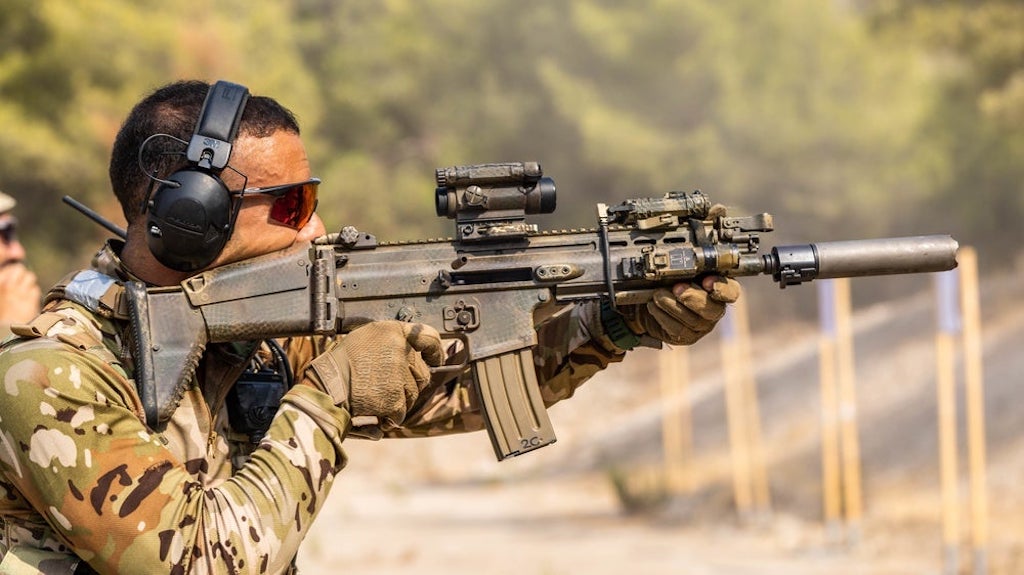In 1975, the Swedish company Aimpoint introduced their first red dot reflector electronic sight. With no magnification and a single-point reticle, it was designed for hunters to take low-probability, close-range shots on fast-moving game. The Aimpoint was even housed in a 30mm body, the same as most hunting scopes, so that hunters could easily install it on their existing scope rings. Of course, the same qualities that made the Aimpoint an excellent hunting optic also made it an excellent combat optic.

Close-range optics saw limited military adoption by Special Forces during the Vietnam War with the Singlepoint Occluded Eye Gunsight. However, this fiber optic sight was unpowered, used a massive 16 MOA reticle and restricted a shooter’s field of view as its name suggests. Still, it worked at close quarters and was faster than using traditional iron sights, especially at night. After the Aimpoint hit the market, Special Forces took notice.

During the 1980s, the elite operators of Delta Force adopted the Aimpoint 2000 electronic red dot sight. The Aimpoint 2000, as well as the updated 3000 and 5000 (which offered 2x magnification) models, saw action during Operation Just Cause and through to Operation Gothic Serpent. Although the movie Black Hawk Down depicts Delta operators using Aimpoints, they are anachronistic CompM2 models that were not in military service until the year 2000.

Unlike previous models, the Aimpoint CompM series was designed specifically for the rigors of military service. Although the optic’s body kept the 30mm size, its length was shortened to create a more rugged and durable product. Adopted by the U.S. Army as the M68 Close Combat Optic, the CompM2 saw extensive use in Iraq and Afghanistan where it earned a reputation for being nearly indestructible. Aimpoint has examples of optics that were shot and blown up that still function.

By August 2011, the U.S. Army purchased 1,000,000 M68CCOs. This included the CompM4, an improved version of the CompM2 that uses a more common AA battery, which was adopted under the M68 line. Speaking of batteries, in addition to their ruggedness and dependability, Aimpoints are famous for their long battery life. Although troops are regularly issued fresh batteries on deployment, the M68 has an average battery life of 10,000 hours of constant operation depending on the brightness level. Civilian users even popularized the practice of keeping an Aimpoint on all the time and replacing the battery once a year on their birthday or Christmas.

As more affordable red dots entered the market with features like auto-off with motion activation and solar power, Aimpoint brought a new development to the world of electronic sights. Rather than using one of the aforementioned features to increase battery life, they shrunk the LED. Generally, red dots use the smallest LED possible to create their reticle. However, these LEDs still have to be masked off to create dots as small as 4 MOA, resulting in wasted energy. Aimpoint managed to make their LED five times smaller. This resulted in an average battery life of 50,000 hours as well as new micro optics with 2 MOA dots.

Although the military has started adopting more advanced optics like the DVO and the NGSW-FC, the Aimpoint remains in heavy use by both conventional and Special Forces in the U.S. and around the world. Variable magnification and integrated ballistic computers are unquestionable force multipliers. However, it’s hard to beat a traditional red dot for close-range speed and durability.
Feature Image: U.S. Special Operations Command Europe


